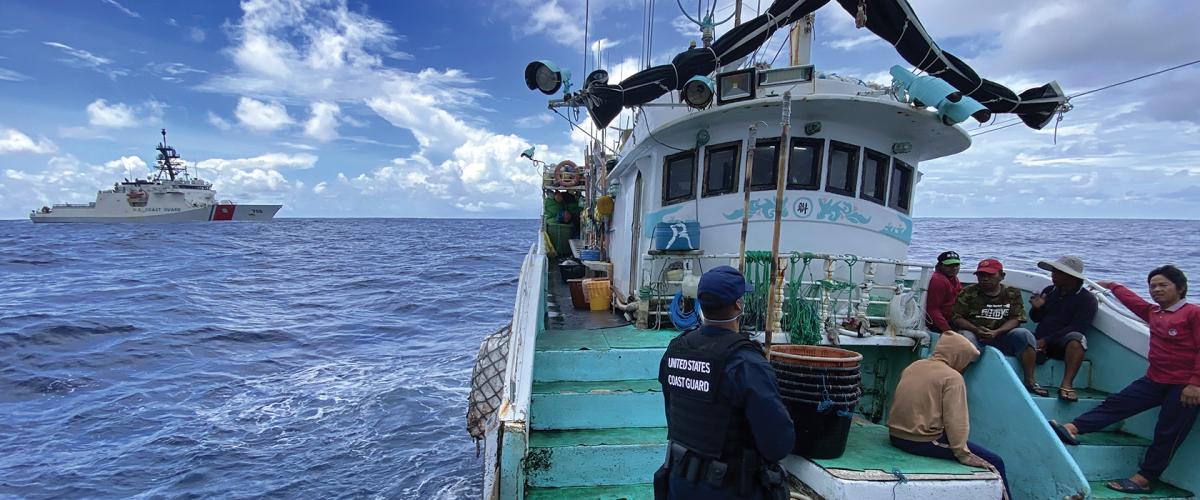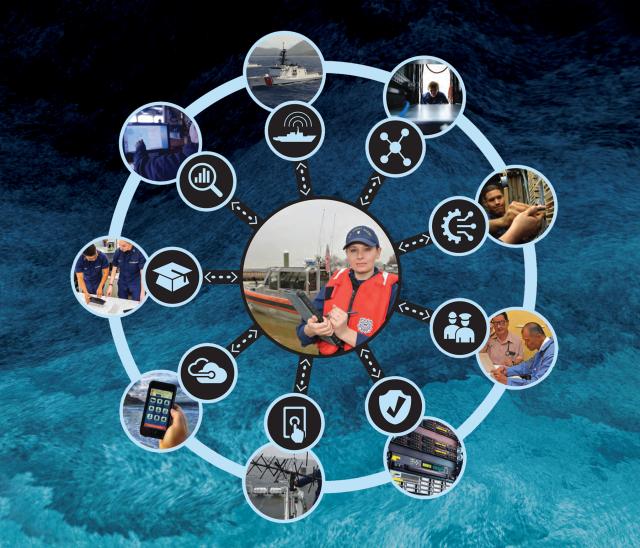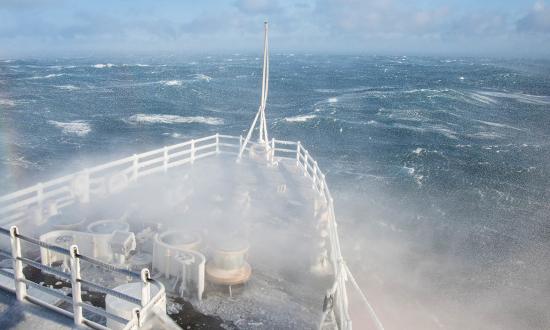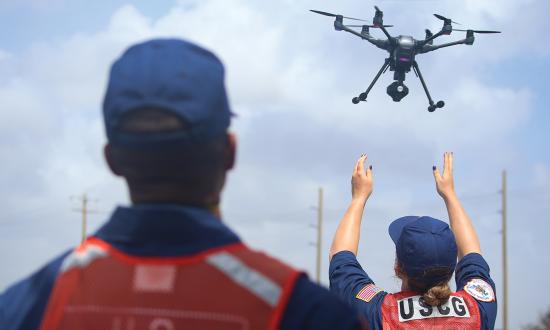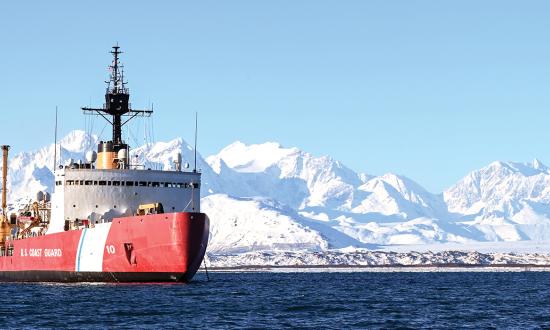The Coast Guard is in the midst of its most aggressive modernization campaign in recent history. Offshore patrol cutters soon will replace the service’s aging medium endurance cutters, polar security cutters will usher in a new era of Arctic operations, and a “technology revolution” will provide connectivity for real-time communications.1 This modernization is long overdue; however, major questions remain about how this modernization will change Coast Guard operations.
As this modernization unfolds, there is a risk the service will continue “ops normal,” without improving how it understands its people, supply chains, and operational environments. For example, new offshore patrol cutters will face the same training struggles as medium endurance cutters if the Coast Guard does not reimagine its training management software.
Today’s complex operations are regularly managed on Microsoft Word files, Excel spreadsheets, and even Post-It Notes. Every unit has a unique set of spreadsheets, ranging from recall lists to duty schedules to inspection schedules. This is the equivalent of every small-boat station having its own unique type of boat—and it makes meaningful information sharing almost impossible. This lack of standardization and accessibility creates data silos in which the same type of data might be maintained in multiple versions by different people. If you asked the question, “How many people are in the Coast Guard?” you would likely get different answers from different data sources.
The Coast Guard must become a data-driven organization. In a future data-driven Coast Guard, aging systems, such as the Marine Information for Safety and Law Enforcement (MISLE) database, would be quickly replaced by systems that make operators’ lives easier. The service could answer operational questions in minutes rather than days or weeks. Artificial intelligence would inform complex supply-chain management decisions for cutters and aviators alike. This future Coast Guard could be truly ready, relevant, and responsive.
The path to becoming a data-driven Coast Guard is multifaceted and involves acquiring a new integrated data environment (IDE), establishing new data governance frameworks, replacing aging data management systems, thinking innovatively about policy, and, most critically, empowering the service’s own people.
Bring a Coast Guard Integrated Data Environment Online
The first step toward becoming a data-driven Coast Guard is to bring an IDE online. An IDE is a library that organizes, cleans, and combines data from across the Coast Guard to empower operators and leaders to make informed decisions. The real power behind an IDE is the integration. Today’s Coast Guard has a lot of data, but few of the data tracking systems talk to each other. An IDE would bring these data silos together in a meaningful way.2
Once an IDE is implemented, customized toolboxes can be built for specific purposes. For example, District 17 in Alaska could create a fisheries management toolbox that would empower its operators to conduct boardings more efficiently. Currently, it is difficult for the Coast Guard to answer questions such as:
• Where should patrol boats stage in advance to efficiently conduct law enforcement boardings?
• Which vessels in a fishing fleet have gone the longest without a boarding?
• Which vessels have engaged in fishing activities in the past 24 hours?
These are all questions that could be easily answered with an IDE, and answering them means less frustration from missing the fishing fleet based on bad intelligence. The possibilities across the service are only as limited as the Coast Guard’s imagination.
The Coast Guard already is headed in the right direction. On 5 April 2021, it solicited industry feedback regarding acquiring an IDE that would be a Coast Guard version of a Defense Information Systems Agency Big Data Platform.3 However, the work is only just beginning.
Clean, Organize, and Manage Data
Unfortunately, bringing an IDE online will not guarantee its usefulness for operations. Instead, the responsibility for data accuracy and quality will have only just begun. In its current state, if the Coast Guard’s data were an operational asset (like a helicopter), it would not be considered mission capable. It would not be ready if the service needed to deploy it in a search-and-rescue case.
Repairing Coast Guard data involves establishing a process called data governance. The Coast Guard needs to write its manuals and procedures for cleaning and repairing data just like the aviation community has established a process for replacing a turbine. Data governance establishes who would train the maintenance technicians, how they do their maintenance, and what happens if they need to order new parts. The hard, meticulous details of understanding data deduplication and authoritative data sources will get the service’s data ready to deploy in a national crisis.
The Coast Guard has already taken an important step toward establishing a data governance framework, and the Data Readiness Task Force is tasked with its implementation.4 This is significant because it indicates the service is serious about changing its culture to become a data-driven organization.
Take Information Entry Off the Operator
A key objective of good data governance is removing as much burden from operators as possible. Today’s boarding teams, pilots, small-boat crews, and cuttermen are weighed down by slow and aging data management systems. Data often disappears, as if into a blackhole, when it is entered into a system but does not contribute to future missions. Too often, operators are asked to enter the same data multiple times into different systems.
MISLE is a good example of a burdensome system. MISLE came online in 2001, and even though it has seen a handful of updates, its core system is still the same.5 There are active-duty Coast Guardsmen working with MISLE who were born after it was created. Boarding teams rise early to prepare for the day ahead. And after preparing for and conducting multiple boardings, the data-entry burden frequently rests on those same boarding teams. Under this framework, it should not be a surprise when data quality suffers from human errors in the data-entry process.
The Coast Guard cannot claim to be a data-driven organization as long as the “tip of the spear” carries such a heavy burden. The service must focus on removing it. Data needs to work for the operator, rather than the operator working for the data.
Encourage Progressive Policy-Making
An IDE is a powerful tool, and its support will require innovative policy. The Coast Guard is sailing into uncharted waters, and as it strives to become a data-driven organization, there are a host of unknowns it will have to navigate. Topics such as privacy, classification levels, and ethical artificial intelligence all will need to be addressed. If the service is not proactive, it is likely the technology will outpace the policy managing it.
Any policy needs to be scalable and enduring, include accountability, and be designed to enable the Coast Guard to adjust to the amount of data it is managing. The global volume of data is doubling every three years, and the Coast Guard’s data likely will follow a similar trajectory. Policy that is too detail-oriented could act as a bottleneck to scaling the amount of data in an IDE. In addition, policymakers need to carefully consider the technology and design policies that account for a fluid technological environment. Policy outpaced by the technology it governs can be hard to undo and worse than no policy at all. Last, accountability is critical because it is the Coast Guard’s link to the American people’s trust. The service has sweeping law enforcement authorities, and public trust can easily be compromised. The service should reject advanced analytic endeavors that could compromise this trust.
The path to an effective data policy begins with collaboration. Lawyers, data scientists, and privacy experts are critical stakeholders, and collaboration should be focused on rapid progress without compromising privacy or legal standards.
Empower Subject-Matter Experts and Innovators
The final pillar of a data-driven Coast Guard is an empowered workforce. The service has no shortage of people who want to make a positive impact on the world. Two examples of field-level innovators are Lieutenants Emily Johnson and Jake Taylor. These collaborators created FishTactic, a machine-learning tool designed to inform District 17 fisheries boardings. Their accolades include the 2020 Rist Prize from the Military Operations Research Society and the 2017 Coast Guard Innovation Award.
The Coast Guard is a small service, and there are many ways to identify its brightest minds. In October 2020, the Officer Subspecialty Experience Indicator 23 (SEI23) for operations research and data analytics was established. Currently, 50 officers between the ranks of lieutenant and captain have received approval for varying levels of SEI23. Of these 50 officers, only 25 percent are in analyst positions. While this gap might be concerning, it also means there are analysts widely dispersed who understand the biggest problems facing the Coast Guard. The service just needs to empower them with the tools they need to solve those problems.
Empowering people can include a few key ingredients: Minimize administrative burdens, give them clean data, and offer them powerful analytical tools. An IDE, governed by an effective Office of the Chief Data Officer, will inspire people to reimagine the future of the service. Let data experts innovate, and the Coast Guard will never be the same.
A Long Voyage Ahead
In some ways, the Coast Guard already is a data-driven organization. The service values those with a rich knowledge of their crafts, people, and operational environments. Framed a different way, seasoned leaders have processed decades of data and can teach others based on experience. The Coast Guard does not need to change its DNA to become data-driven; rather, it needs to empower those with a deep knowledge of the service.
There are significant obstacles to this becoming a reality. Coast Guard data currently is disorganized and not user friendly, hard to reach, and in need of repair. Aging data management systems poorly serve Coast Guard operators, leaving them skeptical of future efforts. Future policy needs to be as innovative as the technology revitalizing the data.
This is a worthwhile journey. Those earnestly embarking on it care for the Coast Guard’s assets and its people. As new ships and equipment come online, the Coast Guard has an opportunity to shift the paradigm from operators working for the data to data working for operators.
1. ADM Karl L. Schultz, USCG, U.S. Coast Guard Strategic Outlook: 2018–2022, U.S. Coast Guard, 14 November 2018.
2. Jon Wilkes, The Integrated Data Environment: A New Tool for Interoperability and Effective Data Integration for Command and Control, NATO (March 2004).
3. “U.S. Coast Guard—Surveyor,” Government Contracts, 5 April 2021.
4. Shana Brouder, “Coast Guard’s First Data Strategy Guides the Way Forward for Data Readiness and Well-Informed Decision Making,” My Coast Guard News, 2 March 2021.
5. U.S. Coast Guard Marine Safety Management System (MSMS), 2001.



